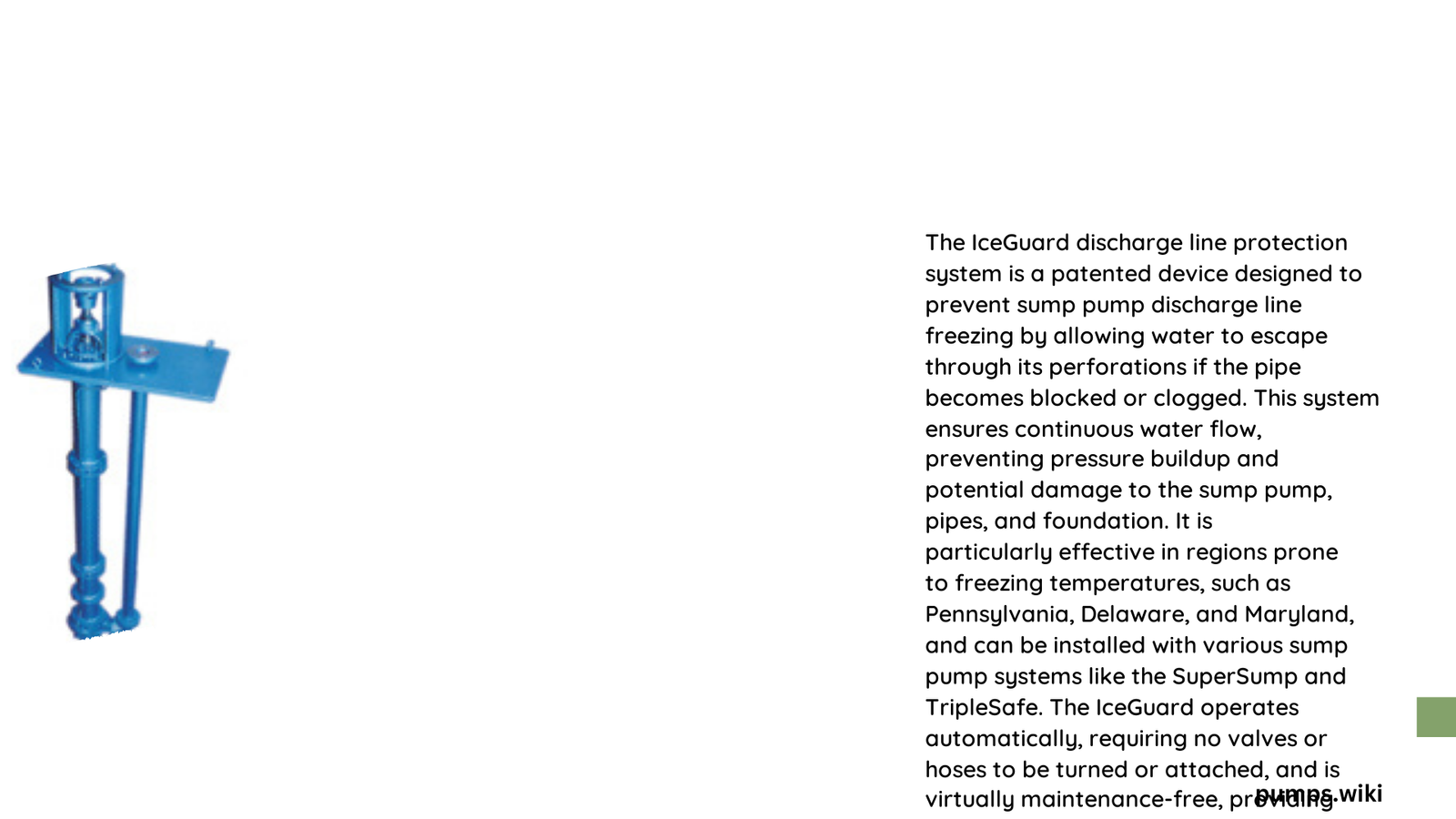Sump pump discharge lines are vulnerable to freezing during cold winters, potentially causing significant water drainage problems and potential basement flooding. Homeowners must implement strategic protection methods involving proper insulation, installation techniques, and regular maintenance to prevent ice blockages and ensure continuous water removal from their property. Understanding comprehensive freeze prevention strategies can save substantial repair costs and protect your home’s foundation from water damage.
What Makes Sump Pump Discharge Lines Vulnerable to Freezing?
Sump pump discharge lines face multiple challenges in cold environments that increase freezing risks:
Factors Contributing to Discharge Line Freezing
| Environmental Factor | Risk Level | Potential Consequences |
|---|---|---|
| Ambient Temperature | High | Complete line blockage |
| Ground Exposure | Medium | Partial ice formation |
| Water Velocity | Low | Reduced drainage efficiency |
Why Proper Insulation Matters?
Effective sump pump iceguard discharge line protection involves multiple strategic approaches:
- Material Selection
- Choose high R-value insulation materials
- Prioritize closed-cell polyurethane foam
-
Select outdoor-rated insulation products
-
Installation Techniques
- Cover entire discharge line length
- Ensure seamless insulation coverage
- Minimize potential air gaps
How to Choose the Right Insulation Materials?

Recommended Insulation Options
- Closed-Cell Polyurethane Foam
- R-value: Approximately 6.25 per inch
- Excellent moisture resistance
-
Flexible and adaptable to pipe movements
-
Rubber Insulation Sleeves
- Durable outdoor performance
- Quick installation process
- Moderate thermal protection
Cost Considerations for Discharge Line Protection
Estimated Investment Breakdown:
– Insulation Materials: $50 – $200
– Professional Installation: $100 – $300
– Annual Maintenance: $20 – $100
What Are the Best Installation Practices?
Step-by-Step Discharge Line Insulation Process
- Measure discharge line dimensions precisely
- Clean and prepare pipe surface
- Select appropriate insulation material
- Cut insulation to exact pipe length
- Apply insulation with minimal gaps
- Secure insulation using appropriate fasteners
How to Maintain Discharge Line Protection?
Recommended Maintenance Checklist
- Quarterly Inspection
- Check insulation integrity
- Verify no visible damage
-
Ensure complete coverage
-
Pre-Winter Preparation
- Test sump pump functionality
- Inspect discharge line for potential weaknesses
- Replace worn insulation materials
What Are Common Freezing Prevention Strategies?
Advanced Protection Techniques
- Install underground discharge lines below frost line
- Use heat tape for additional warmth
- Create gradual slope for water drainage
- Consider backup sump pump systems
Technical Recommendations
Professional Insights
- Minimum recommended R-value: 4-6
- Preferred insulation thickness: 1-2 inches
- Ideal installation depth: Below local frost line
Potential Risks of Inadequate Protection
Consequences of Neglecting Discharge Line Insulation
- Complete water drainage blockage
- Potential basement flooding
- Structural water damage
- Expensive emergency repairs
Expert Tips for Long-Term Success
- Regular professional inspections
- Invest in high-quality insulation materials
- Monitor local weather patterns
- Implement preventative maintenance strategies
Recommended Equipment
- Thermal imaging camera
- Professional-grade insulation materials
- Moisture detection tools
Conclusion
Sump pump iceguard discharge line protection requires comprehensive understanding, strategic planning, and consistent maintenance. By implementing these expert-recommended techniques, homeowners can effectively prevent freezing and ensure reliable water drainage throughout challenging winter conditions.
